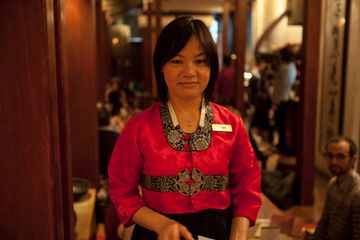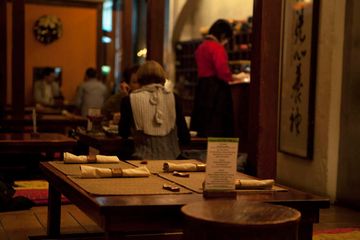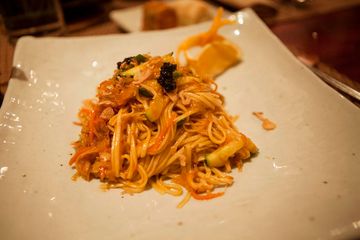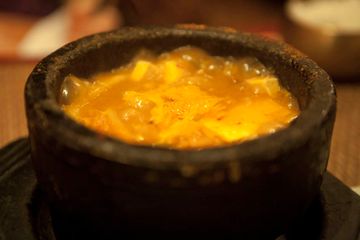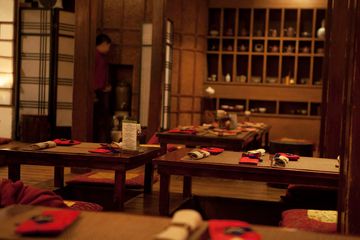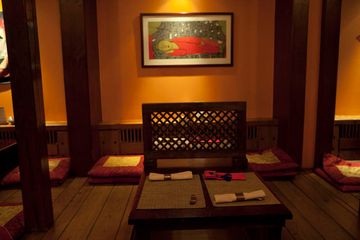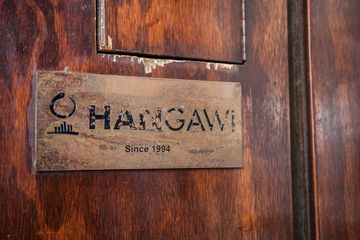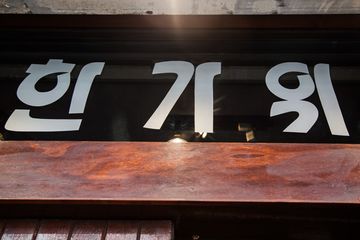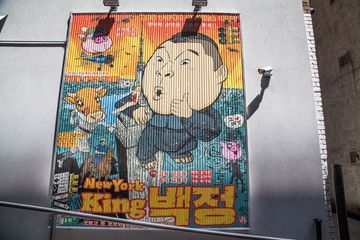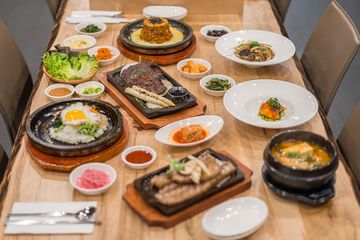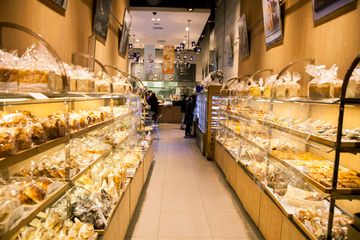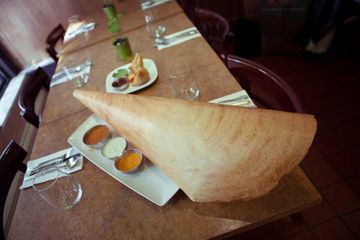Olivia, a member of the Manhattan Sideways team, and I stumbled upon Five Senses and knew immediately that we had not seen this restaurant before. Sure enough, we quickly learned that they had only been open for three days, and it was already bustling with customers. Diners sat near the windows, under the row of long wooden boards on the wall, at the main dining table, separated into separate sections by panes of glass, and in the rear of the restaurant by the kitchen, open to the room save for a curtain of birch boughs. The entire space gave off an air of calm, in hues of slate and brown. We met John Lee, the co-owner of the restaurant along with his brother, Richard. John has been in the food world for a long time, though mainly in supermarkets and fruit markets. Richard had been working on Wall Street. Together they followed their dream. “I’ve always had a passion for food, ” John explained, “And I’ve always wanted to do a Chipotle-style Korean restaurant. ” His goal is to give the everyday person a taste of the Korean experience, and thanks to his first joint venture with his brother, he can. Five Senses is different from the other Korean restaurants on the block. “Everyone else is old school, ” John explained. He assured us that he has nothing against “old school, ” but that it is not what Five Senses is about. John serves up traditional Korean food with a modern twist, using an army of young, talented chefs. “My chefs – they do everything, ” John beamed. The amount of skill in the kitchen has made it hard to choose what to put on the menu: John is using the first couple weeks - in June, 2015 - to play with his meal offerings and see what people prefer. John surprised us during our visit with a veritable feast. It started with an assortment of banchan, little plates of vegetables and other specialties that are traditionally served at the beginning of a Korean meal. The banchan vary each day, but we received dishes containing cellophane noodles, cauliflower and mushrooms, anchovies, a spicy root vegetable concoction, spinach, and, of course, kimchi. As we marveled at the intensity of flavors, John assured us, “All my food is fresh, never frozen. " We dove into the banchan with vigor as he told us about some of his other dishes, like an Ogam Oyster Gook Bap with seaweed, radish, and chive, which "no one else on the block serves, " and cod and short rib soups that he calls “Mother’s Soup” and “Father’s Soup” in honor of his parents. “My mother is a great cook, ” he said with a smile, "and My dad is a doctor. "Our feast was not yet complete: For Olivia, John brought out a light pork salad as well as fried pork served with a citrusy “secret sauce. ” John explained that he tries to use every part of the animal: “People know about pork belly, but pork neck can also be excellent. ” John sweetly placed a sizzling vegetarian masterpiece in front of me, made up of rice, radishes, bean sprouts, cucumber, mushrooms, and watercress, all cooking away on a huge slab of rock, ultimately causing it to be delightfully crispy. As we were getting ready to go, John informed us that he would like to eventually keep the restaurant open twenty-four hours. After 10pm he plans to offer special food pairings with soju, a Korean drink similar to sake. We look forward to returning to see Five Senses after hours!

